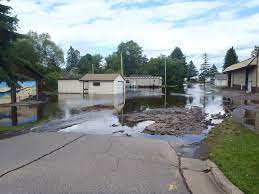Floods are common in many parts of the world, and if you’re not prepared for them, they can cause a lot of damage. In this blog post, we will discuss what to do if your house floods and how to minimize the damage. We will also discuss some of the most common consequences of floods and how to prevent them.
Things to do when you start hearing warnings:
As random as natural disasters are, you will have a warning that your area is about to experience flooding. Your time begins from the moment you hear these warnings, and here’s what you can do before the flood hits your house.
Turn off your electricity: The first step you should take if your house starts to flood is to turn off your electricity. This will prevent any fires from starting due to electrical shorts. If you can’t reach your circuit breaker, call your power company, and they will shut off your power for you.
Move important items to higher ground: Once you’ve turned off the electricity, start moving all your important belongings to higher ground. This includes things like furniture, electronics, and anything else that could be damaged by water. If possible, put these items in plastic bags to prevent them from getting wet.
Evacuate if necessary: Depending on the severity of the flooding, you may need to evacuate your home. If the water is rising quickly or if there is a danger of the floodwaters breaching your home, it’s best to leave and go to a safe location. Make sure you plan where and how you will get there before the flood hits.
What to do after the flood:
Once the floodwaters have receded, it’s time to start cleaning up the damage. Depending on the severity of the flooding, this can be a daunting task. Here are some tips for cleaning up after a flood:
Throw out any food that was affected by the flood: Any food that came into contact with floodwater should be thrown out. This includes food in your pantry, fridge, and freezer. It’s better to be safe than sorry about food contamination.
Start drying out your home: The next step is to start drying out your home. This can be done by opening windows and doors, using fans, and running a dehumidifier. You want to get the air moving around your house to help dry things out.
Checking for mold: Once your home is dry, you must check for mold. Mold can start growing within 24-48 hours of flooding, so it’s important to be on the lookout for it. If you see any mold, you should clean it up with a bleach solution and have a professional assess the damage.
Clean all your belongings: Once your home is dry, you need to start cleaning all of your belongings. This includes clothing, furniture, electronics, and anything else affected by the floodwaters. If possible, wash items with soap and water. If not, you may need to throw them out.
Consequences of floods:
Floods can cause a lot of damage, both to your home and to your belongings. In addition, floods can lead to health problems in the short and long term. Here are some of the most common consequences of floods:
Damage to your home: Floodwaters can damage your home in several ways. They can cause structural damage, such as compromising the foundation or walls of your home. Floodwaters can damage your belongings, including furniture, electronics, and clothing.
Health problems: Floods can also lead to health problems in the short and long term. In the short term, you may experience skin infections or respiratory problems from coming into contact with floodwater. In the long term, you may be at risk for mold exposure or other diseases.
Emotional stress: Floods can be very stressful, both emotionally and mentally. The aftermath of a flood can be overwhelming, especially if you’ve lost everything. It’s important to take care of yourself physically and emotionally during this time.
If you live in an area prone to floods, it’s important to be prepared. Make sure you have a plan for what you will do if your home starts to flood. It’s also important to adopt a few policies to help you escape the long-term consequences of the flood. Things like getting flood insurance and keeping important belongings in a safe place will go a long way in protecting you and your home. In addition, you can also use this time to create an emergency kit that you can use in the event of a flood. This kit should include food, water, and first aid supplies. By being prepared, you can help minimize the damage caused by floods. When it comes to floods, preparation is key. By taking the time to plan, you can help protect yourself and your home from the worst-case scenario.

